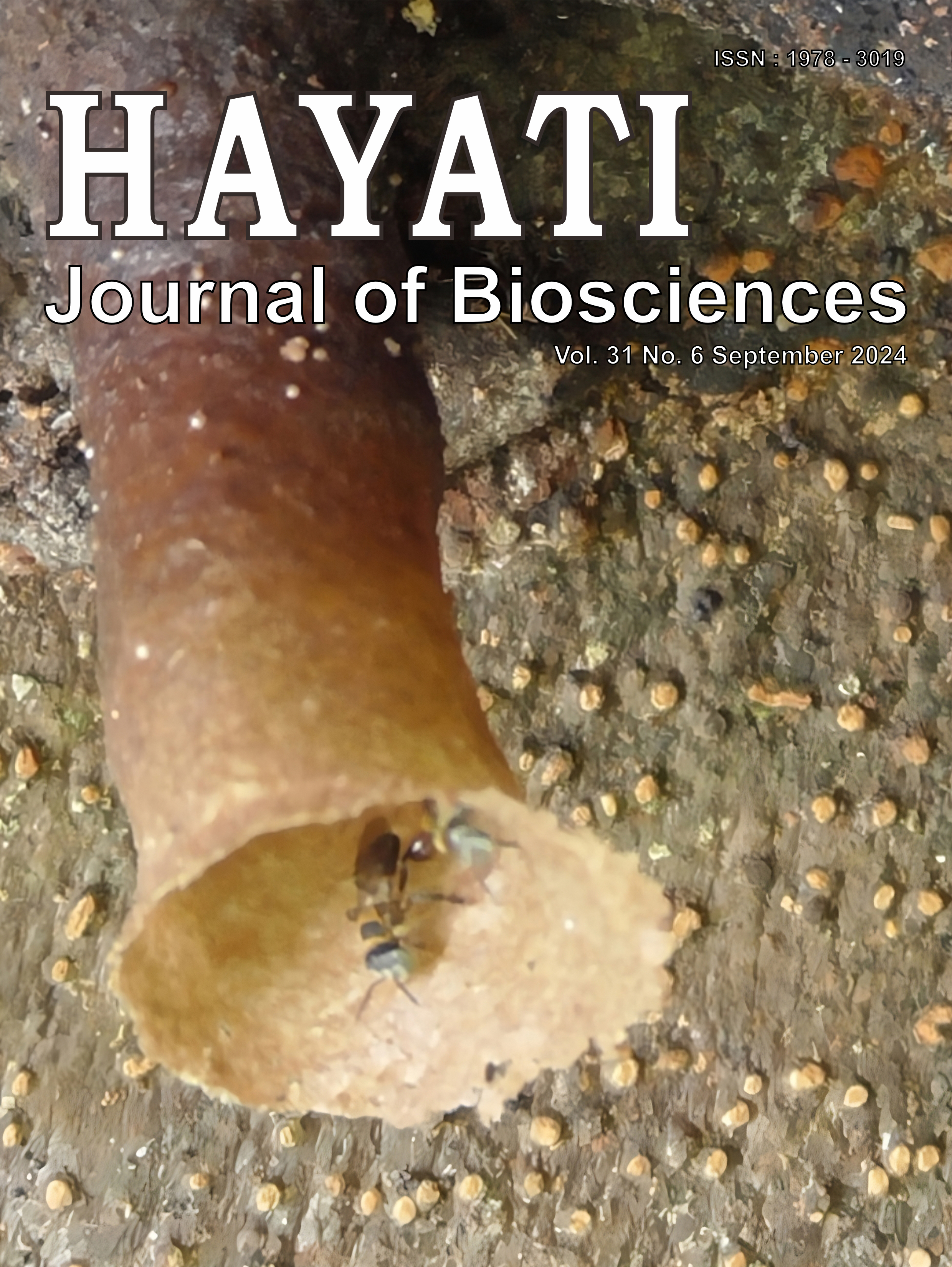LC-HRMS-Based Metabolomics for Profiling the Metabolites in Different Plant Parts of Centella asiatica
Abstract
Centella asiatica, or pegagan in Indonesia, is a perennial plant used in Indonesian traditional medicine (jamu) and functional food with many biological activities. Those biological activities come from the bioactive metabolites present in C. asiatica. Differences in metabolite pathways in each part of the plant affect the accumulation of metabolites contained, thus impacting its biological activity. Therefore, this study aims to identify and evaluate differences in the distribution of metabolites in each part of C. asiatica, namely leaves, stems, stolons, and roots. Each plant part was extracted using methanol and sonicated for 30 minutes. The metabolites in the samples were separated and detected using UHPLC-Q-Orbitrap HRMS. Differences in the distribution of metabolites in each part of the plant were evaluated using chemometrics analysis. UHPLC-Q-Orbitrap HRMS analysis could positively identify 37 metabolites, most of which belong to the phenylpropanoid, triterpenoid, triterpenoid saponin, and flavonoid groups. Principal component analysis was able to clearly distinguish each part of the plant using the peak intensity of the overall chromatogram and the peak area of the identified metabolites. The different biosynthetic pathways of metabolites in plants could cause a difference in the distribution of metabolites in each plant.
Downloads
Copyright (c) 2024 Mohamad Rafi, Muhammad Miftahul Madya, Alfi Hudatul Karomah, Dewi Anggraini Septaningsih, Taopik Ridwan, Eti Rohaeti, Siti Aisyah, Rinaldi Idroes

This work is licensed under a Creative Commons Attribution-NonCommercial 4.0 International License.
HAYATI J Biosci is an open access journal and the article's license is CC-BY-NC. This license lets others distribute, remix, tweak, and build upon author's work, as long as they credit the original creation. Authors retain copyright and grant the journal/publisher non exclusive publishing rights with the work simultaneously licensed under a https://creativecommons.org/

























.png) IPB University
IPB University Department of Biology
Department of Biology The Indonesian Biological Society
The Indonesian Biological Society 

